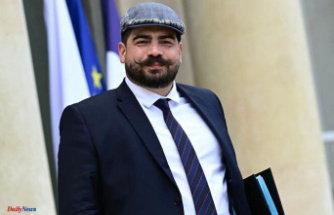During the political change in the GDR in 1989 and 1990, Stasi employees tore up masses of files to destroy evidence. The technology designed specifically for their reconstruction does not bring the hoped-for success, and a new solution must now be found. Because it is about historically important documents.
More than 30 years after German unity, the Federal Archives want to start a new attempt to have millions of pages of torn Stasi files reconstructed using computer technology. The Federal Archives announced that the contract with the previously commissioned Fraunhofer Institute would be terminated. Now follows a "market survey" and the search for a suitable provider for virtual reconstruction based on the current state of the art.
During the peaceful revolution in the GDR in 1989 and 1990, employees of the Ministry for State Security tore up secret service files on a large scale. Around 15,500 sacks of snippets were secured in the hope of being able to piece together the historically important documents. Since 2007, the Fraunhofer Institute for Production Systems and Design Technology (IPK) has been examining how this could be achieved with the help of computer technology.
In a test, snippets from 400 sacks were to be made virtually readable again. Although the "e-puzzler" developed for this purpose basically worked, there were so many technical hurdles that initially only 23 bags with 91,000 pages were processed. For comparison: At the same time, documents were reassembled by hand - after all, this was achieved within 20 years with 1.7 million pages from 600 bags. In any case, this manual reconstruction should continue.
According to the archive, the federal government has invested around 6.5 million euros in the IPK pilot project since 2007. "Unfortunately, we have to state that the demanding research project for virtual reconstruction has not fulfilled our common hopes," explained Federal Archives President Michael Hollmann. "Because we take the job very seriously and want to move forward in the interests of the victims of the SED dictatorship, we decided on a clear cut and a fresh start."
It is assumed that the up to 55 million pages from the snippet bags contain important information on Stasi surveillance from 40 years of GDR history. The Federal Archives explained that some manually reconstructed documents related, for example, to the spying on and persecution of opposition figures such as Jürgen Fuchs, Robert Havemann or the writer Stefan Heym. Insights into the doping practice of GDR sports and border security have also become possible.












